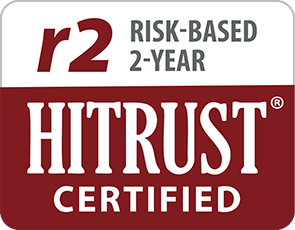Written by Shannon,
Brightside Health
6 Minute Read

Medically reviewed by:
Erin O'Callaghan, PHD
Director of Therapy
10 Minute Read

Panic attacks can be exhausting, overwhelming, and triggering all at once, and it can be tough to sort through all of these feelings on your own, let alone try to explain them to someone else.
When it comes to explaining your panic attacks to a loved one, it can be very hard to find the right words, and this is especially the case if your loved one has never struggled with anxiety personally or may not be familiar with the ins and outs of this challenging mental health condition.
That said, there are a few different approaches you can take to help you better describe your panic attacks to the people you love. This is your complete guide to explaining the feeling of anxiety to loved ones so that you never have to suffer in silence.
Explaining Your Specific Symptoms
One approach you can take when trying to explain your anxiety to someone else is to start by explaining the specific symptoms that you as an individual experience when your anxiety kicks in.
Even if this doesn’t give your loved one the full picture of all the things that anxiety entails, describing your most common symptoms will at least allow them to understand how uncomfortable, frightening, and draining it can be to battle an anxiety disorder on the regular.
Some of the most common symptoms associated with anxiety include:
- Restlessness, nervousness, or tension
- Irritability
- A sense of impending doom, danger, or panic
- An increased heart rate
- Sweating
- Trembling or shaking
- Feeling weak or fatigued
- Having difficulty concentrating, thinking clearly, or thinking about anything other than whatever is making you anxious in the moment
- Gastrointestinal issues
- Having difficulty controlling your worries
- Having the urge to completely avoid anything that you know makes you anxious or that you suspect might trigger your anxiety
Panic can manifest in very different ways for different people — some people may experience some of the symptoms above, maybe even all of them, or a few symptoms not mentioned. Thus, even if your specific symptoms are not on this list, they are still valid and worth talking about if you feel that doing so will be conducive to your healing.
Explaining your symptoms to a loved one might bring you some comfort by making your struggles feel less isolating. Even if your loved one does not struggle with anxiety, they may still be able to understand how unpleasant it is to experience. For example, if you suddenly experience trembling, feelings of impending danger, and shortness of breath, they’ll be better equipped to not only understand what’s going on, but they may even be able to help.
Explaining What Anxiety Itself Feels Like
Explaining what anxiety feels like can be difficult, but there are still a few ways that you can attempt to do this.
Even if your loved ones have never experienced an anxiety disorder, they have likely experienced some form of acute, short-lived worry or anxiety in response to a stressor at some point in their life. Still, this type of short-term anxiety does not come close to the symptoms caused by panic disorder.
When it comes to explaining anxiety, it might be helpful to use the following descriptions:
- Panic can sometimes feel like you are physically suffocating. Because your mind and body are so closely connected, anxiety can cause physical sensations, too, including chest tightness, a racing heart, stomachaches, or headaches. Explaining this feeling to your loved one might help them better understand your condition.
- Explain that your panic feels tense or exhausting. Panic can cause all of the muscles in your body to tense up, resulting in stiffness, body aches, and utter exhaustion. Even getting plenty of sleep may not help relieve the tiredness brought on by panic attacks.
- There are good days and bad days. You may not experience a panic attack everyday, but when an attack does come around, it can be extremely hard. There are good days and bad days with all anxiety disorders, and just because you feel okay one day does not mean you will feel okay every day from then on. Explaining this to your loved one can help them realize that your panic is not linear, nor will every day be identical.
- Sometimes, panic attacks can cause immense shame. Feelings of shame or guilt are extremely common with all forms of anxiety, and this is because of how consuming and powerful anxiety and panic really is. Maybe your panic attacks prevent you from engaging in certain social activities or from carrying out regular everyday tasks. It is common for panic to take a toll on self-esteem, leading to feelings of shame, and if you tell this to your loved one it can be very clarifying.
- Explain that panic attacks can be terrifyingly mistaken for a serious medical problem. Because panic attacks frequently involve physical symptoms, it is easy to trick yourself into thinking these symptoms are being caused by something more than just your anxiety. Heart palpiations, sweating, stomach issues, and other physical symptoms may make you beelieve you are experiencing a heart attack or other medicla emergency.
- Explain the way that a panic attack can creep up on you and start suddenly. One second you are feeling fine, and the next second it feels like you are struggling to breathe. This is often the reality of living with a panic disorder, and it is not always as clear cut as waking up in the morning and immediately recognizing that it is going to be an anxious day.
How a Professional May Be Able To Help
If you are struggling to find the right words to describe your anxiety to the people you love, a mental health professional may be able to help you sort through your thoughts and come up with a game plan.
Brightside offers personalized treatment plans with science-backed approaches that get you the care you deserve, right in your pocket and in the comfort of your own home.
Just start by taking our free online assessment so that we can fully understand your needs and concerns, and then allow us to match you with a psychiatric provider or therapist who will work with you every step of the way.
The Bottom Line
Explaining the feeling of a panic attack to a loved one can be very hard, especially if your loved one has not struggled with anxiety themselves, but explaining your specific symptoms or describing your panic attacks may give your loved ones a better idea of what you are going through.
That said, turning to a mental health professional can be a great way to find the right words to explain your battles to the people you love and who love you, and Brightside is here to help you help yourself.
Sources:
Anxiety disorders – Symptoms and causes – Mayo Clinic
How to Explain What Anxiety Feels Like – Panic and Anxiety Community Support
The Blurt Foundation Describing Anxiety To Those Who’ve Never Had It – The Blurt Foundation



















